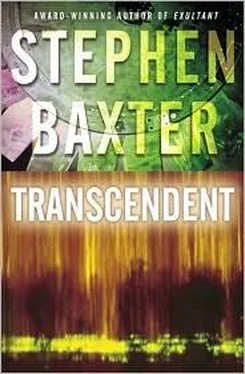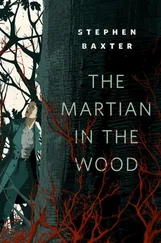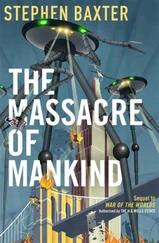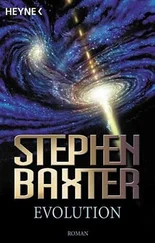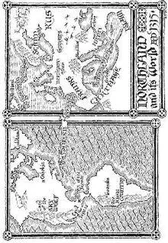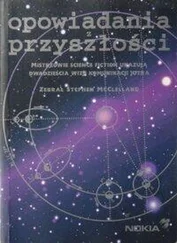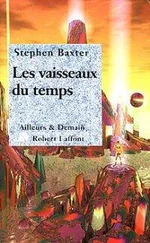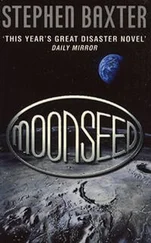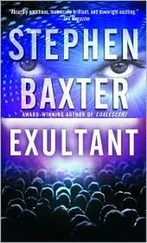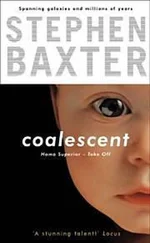“Thanks,” I said warmly.
“Well, personally I’m awed,” Sonia said. “Scared.”
“Me, too,” Shelley said. “It’s a ghost story suddenly coming true.” But she didn’t sound scared, or particularly awed, and neither did Sonia; they sounded curious. I was impressed by the resilience of their minds, the minds of a soldier and an engineer. It wasn’t just their professions that gave them such strength, I suspected, but a deeper robustness of the human psyche.
I said, “There’s no reason to be afraid. If strangeness spooked us we’d still be competing for gazelle bones with the hyenas out on the savannah. We’ll deal with this—”
Tom turned on me. “That’s typical of your bullshit, Dad. What we’re trying to deal with here is my mother. Or rather, that thing that looks like my mother. And all you can come up with is some fucking pep talk about walking out of Africa.” His voice was controlled but brittle.
Rosa said evenly, “We all need ways of coping with this, Tom. You must find your own path, as your father is finding his. This is a reality Michael has accepted for some time, I think. But now suddenly this isreal for you. You were even able to approach your mother—”
“It wasn’t my mother,” he snapped.
Rosa nodded. “Very well. You were able to approach the visitor closely, to inspect her, as I hadn’t been able to in Seville. What did you feel?”
Tom wouldn’t reply. He shot me a resentful, pitying glance.
As for me, I truly believed that this visitor was, on some level, Morag, it really was her. I had always believed that. So how was I supposed to feel? I had never known that, not since my first visitations as a child. My reaction was to figure it out, try to make sense of it. But maybe I was the weak one; maybe the true, strong reaction was actually Tom’s, his devastated weeping on the plain; maybe he felt the reality of this return, its strangeness in ways I was incapable of.
Shelley’s hand crept over mine.
Rosa had been concentrating her own studies on Morag’s speech. She played us a sample. Once again a disembodied head floated over our tabletop; once again I saw that beautiful face, those full lips. But Morag spoke strangely and quickly, a string of syllables too rapid to distinguish, her tongue flicking between her lips.
Rosa froze the image. “There is no known human language detectable in this signal. And yet we can detect structure…”
She told us, somewhat to my surprise, that there was a flourishing discipline in the study of nonhuman languages.
It had originated in questions about animal communication. The songs of whales and whistles of dolphins were obvious case studies, but so were the hoots and screeches of chimps and monkeys, the stamping of elephants — even the dull chemical signaling of one plant to another. But how much information was contained in these messages? Even if you couldn’t translate the language, even if you didn’t know what the whales sang about, were there ways of determining if there was any information in there at all — and if so, how much, how dense? This was a discipline that in latter years had been useful in helping us figure out the sometimes cryptic utterances of our more enigmatic artificial intelligences — and, I thought, it might be useful someday if we ever encountered extraterrestrial intelligences.
Rosa waved a hand, and the air filled with graphs. It was all to do with information theory, she said, the mathematics of sequences of symbols — binary digits, DNA bases, letters, phonemes. “The first thing is to see if there is any information in your signal. And to do that you construct a Zipf graph…” This was named after a Harvard linguist of the 1940s. You broke up your signal into its elements — bases, letters, words — and then made a bar graph of their frequency of use. She showed us examples based on the English alphabet, presenting us with a kind of staircase, with the usage of the most commonly used letters — e, t, s — to the left, and lesser usages represented by more bars descending to the right. “That downward slope is a giveaway that information-rich structure is present. Think about it. If you have meaningless noise, a random sequence of letters, each one is liable to come up as often as any other.”
“So the graph would be flat,” Sonia said.
“Yes. On the other hand if you had a signal with structure but no information content — say just a long sequence of e, e, e, like a pure tone — you’d have a vertical line. Signals containing meaningful information come somewhere between those two extremes. And you can tell something about the degree of information contained by the slope of the graph.”
Sonia asked, “What about the dolphins?” She glanced apologetically at Tom. “I know it’s nothing to do with your mother. I’d just like to know.”
Rosa smiled. “Actually the analysis is a little trickier in that case. With human languages, it’s easy to see the breakdown into natural units, letters, words, sentences: you can see what you must count. With nonhuman languages, like dolphin whistles, it’s harder to see the breaks between linguistic units. But you can use trial and error. Even dolphin whistles have gaps, so that’s a place to start, and then you can expand the way you decompose your signal, looking for other trial break markers, until you find the breakdown that gives you the strongest Zipf result.”
Sonia asked, “And the answer?”
Rosa waved a hand, like a magician. A new line on the graph appeared, below the first and parallel to it. “Dolphin whistles, and whale songs and a number of other animal signals, contain information — in fact they all show signs of optimal coding. Of course knowing there is information in there isn’t the same as having a translation. We know the dolphins are talking, but we still don’t know what they are talking about.”
“We may never know,” said Sonia, her voice tight. “Now that the oceans are empty.”
Gea rolled back and forth, friction sparks flying. You wouldn’t think a tin robot could look so judgmental.
Rosa said brightly, “As far as Morag is concerned we aren’t done yet. There is a second stage of analysis which allows us to squeeze even more data out of these signals.”
As I’d half-expected, she began to talk about entropy. The Zipf analysis showed us whether a signal contained information at all, Rosa said. The entropy analysis she presented now was going to show us how complex that information was. It makes sense that information theoreticians talk about entropy, if you think about it. Entropy comes from thermodynamics, the science of molecular motion, and is a measure of disorder — precise, quantified. So it is a kind of inverse measure of information.
Rosa showed us a new series of graphs, which plotted “Shannon entropy value” against “entropy order.” It took me a while to figure this out. The zero-order-entropy number was easiest to understand; that was just a count of the number of elements in your system, the diversity of your repertoire — in written English, that could be the twenty-six letters of the alphabet plus a few punctuation marks. First-order entropy measured how often each element came up in the language — how many times you used e versus t or s. Second-order and higher entropies were trickier. They were to do with correlations between the elements of your signal.
Rosa said, “If I give you a letter, what’s your chance of predicting the next in the signal? Q is usually followed by u, for instance. That’s second-order entropy. Third-order means, if I give you two letters, what are your chances of predicting the third? And so on. The longer the chain of entropy values, the more structure there is in your signal.”
Читать дальше
